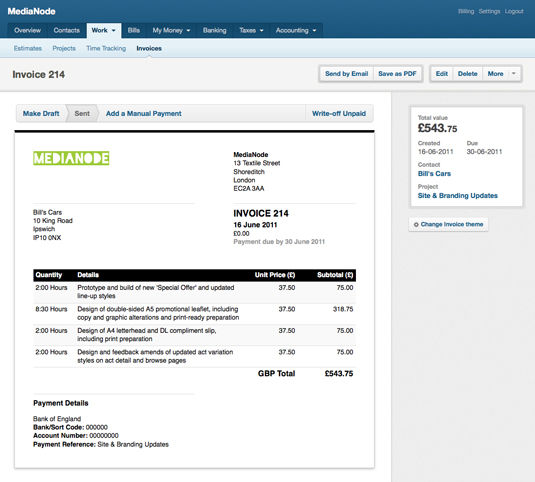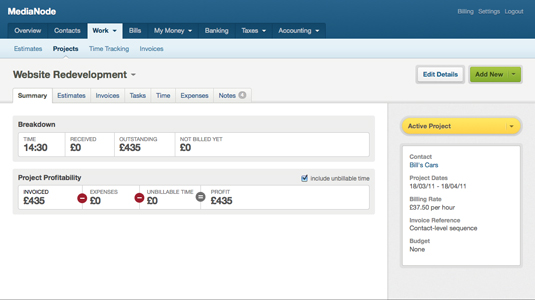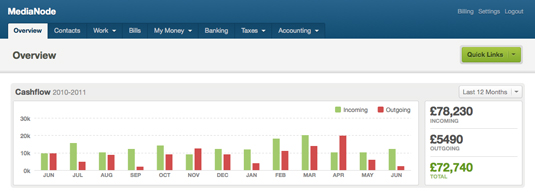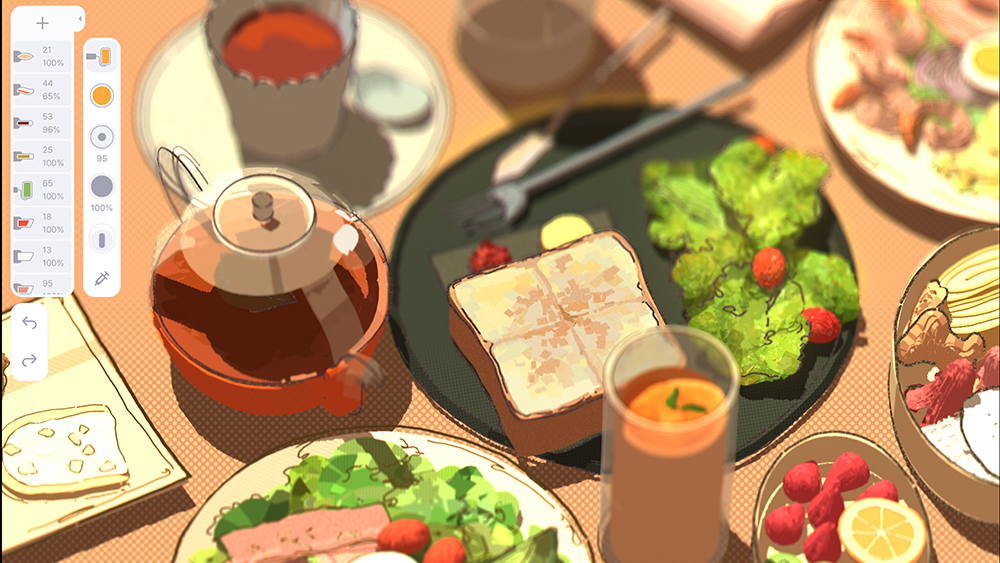Invoicing for designers: 5 pro tips
Emily Coltman of FreeAgent offers pro tips to make sure you get paid promptly.

When you've invested a lot of time and money in planning and building something beautiful for a client, you want to make sure you're paid your dues for the work you've done!
Emily Coltman FCA, Chief Accountant to FreeAgent - which provides an award-winning online accounting system specifically designed for small businesses and freelancers - gives her five tips for how to make this happen.
01. Submit a clear proposal
Great - a client wants to engage you to carry out some work. But you need to make sure both sides are absolutely clear on what work will be done, when, and how long it will take.
Take revisions into account; think about how many revisions you're prepared to include in the original price, if any. In a previous incarnation as a freelance screencaster, I allowed my clients two revisions to a video before charging them more - so would that be suitable for your business, or would you provide your clients with more leeway? Just remember to make your terms clear from the outset and stick to them.
Also, don't forget to agree a price and payment terms. How long will you give your clients to pay once you've invoiced them? Could you take payment either fully or partially up front, before you do any work? This could be kinder to your cashflow, and means that you're sure your clients are committed to the project too.
02. Don't price too cheaply

It's important to make sure you charge what you're worth. Design is a highly skilled profession which calls for a great deal of talent - and as most people don't have an expert eye for colour and layout, or appreciate complex user experience and interactions, you need to make sure your prices reflect these skills.
Don't fall into the trap of thinking that you always have to keep your prices low to avoid losing clients. Remember that clients who only want the cheapest option may be very difficult to deal with. But if you have a client who merits special treatment, perhaps because they can refer lots more customers to you or they have been a long-standing and loyal customer, you could consider giving them a discount.
Do your research. How much are your competitors charging? If you're charging more than them, how do you justify that if a potential customer asks - perhaps you offer more, or your service is faster? How much demand is there for your services? If your service is specialised and in great demand, you could charge a premium price for your work.
03. Make your paperwork look good
You are a designer, so don't neglect this golden opportunity to show off your skills. After all, your proposals and invoices are all part of your brand. Put aside time to refresh the design of your invoices regularly. Keep any text that you add to your invoice in line with your brand "voice". If your website's underlying message is "fun and a bit quirky", then could you carry that over to your invoices too?
04. Invoice promptly

Once you've reached the agreed stage of the project, send your invoice as soon as you finish the work. Don't wait for the end of the month to issue your invoices, because if you don't invoice your clients straight away, they're unlikely to pay you as fast.
Our research has shown that if you invoice quickly, you're more likely to get paid faster. You have earned the cash, the client has agreed to pay, so collect the money, otherwise you could find you don't have enough cash to spare for a tax bill, or a software subscription.
And remember to send your invoices by email, not by snail mail. It's quicker, cheaper, and more convenient for both you and your clients.
05. Make it as easy for clients to pay
Your clients should be able to pay you as soon as they receive your invoice. Don't make them dig out a cheque book and mail you a cheque, or look up your bank information. Put your bank details on your invoice, so that your client has them to hand straight away.
Even better, consider taking payment online, using a service such as PayPal, Stripe or GoCardless, which allow you to take payment by credit card or direct debit without having to set up any special facilities with your bank.
PayPal also allows you to take payment by credit card in person using your smartphone. Do check the small print of these services, though, and make sure you're fully aware of the fees you'll have to pay to use them.
Words: Emily Coltman
Emily Coltman FCA is Chief Accountant to FreeAgent, which provides an award-winning online accounting system specifically designed to meet the needs of freelancers and small businesses. Try it for free at www.freeagent.com

Thank you for reading 5 articles this month* Join now for unlimited access
Enjoy your first month for just £1 / $1 / €1
*Read 5 free articles per month without a subscription

Join now for unlimited access
Try first month for just £1 / $1 / €1
Get the Creative Bloq Newsletter
Daily design news, reviews, how-tos and more, as picked by the editors.

The Creative Bloq team is made up of a group of art and design enthusiasts, and has changed and evolved since Creative Bloq began back in 2012. The current website team consists of eight full-time members of staff: Editor Georgia Coggan, Deputy Editor Rosie Hilder, Ecommerce Editor Beren Neale, Senior News Editor Daniel Piper, Editor, Digital Art and 3D Ian Dean, Tech Reviews Editor Erlingur Einarsson, Ecommerce Writer Beth Nicholls and Staff Writer Natalie Fear, as well as a roster of freelancers from around the world. The ImagineFX magazine team also pitch in, ensuring that content from leading digital art publication ImagineFX is represented on Creative Bloq.
